|
On Trinity Sunday, one cannot help but think of a common greeting heard at Mass, “Let us begin as we wish to begin all things. In the name of the Father, and of the Son, and of the Holy Spirit. Amen.” How many times have we made the Sign of the Cross? Why do we begin Mass (indeed, every prayer) with the Trinity? Perhaps Trinity Sunday is the perfect day to ask, what does it all mean? During a General Audience, Pope Francis remarked, “The Mass begins with the Sign of the Cross. The whole prayer moves, so to speak, within the space of the Most Holy Trinity…” Perhaps we should look at the actions of the Trinity to see what God has done for us and thus see the true power of those words. A favorite hymn sung on Trinity Sunday begins, “O God Almighty Father, Creator of all things, The Heavens stand in wonder, While earth Thy glory sings.” Everything, from the smallest pebble to the tallest mountain and every living creature in between, is the result of God’s generative power. As the Catechism points out, “the totality of what exists depends on the One who gives it being” (CCC 290). And so, when we begin “In the name of the Father,” we remind ourselves of the awesome power God has to create everything from nothing. The second verse of the hymn goes, “O Jesus, Word Incarnate, Redeemer most adored, All Glory, praise and honor, Be Thine, our Sovereign Lord.” St. Paul reminds us, “In him we have redemption by his blood, the forgiveness of transgressions, in accord with the riches of his grace” (Eph 1:7). By his death and resurrection, Christ opened the doors of heaven for the faithful. The third verse says, “O God, the Holy Spirit, Who lives within our souls, Send forth thy light and lead us to our eternal goal.” The Catechism states, “By virtue of our Baptism, the first sacrament of the faith, the Holy Spirit in the Church communicates to us, intimately and personally…” (CCC 683). It is by the Holy Spirit that the knowledge of our faith is revealed to us. And it is through the inspiration of the Holy Spirit that we are able to live out our faith in the hope of reaching heaven. One thing that should be noted when talking about the Persons of the Trinity, is that while the Father, Son, and Holy Spirit may be three distinct Persons, they are still of one nature. This is what we mean in the Nicene Creed when we say that Christ is “consubstantial with the Father”—they are distinct but are of the same substance. The Father, Son, and Holy Spirit are each wholly and entirely God. Many times, when we talk about the Trinity, we appropriate certain actions to each Person, i.e. God the Creator and Christ the Redeemer. This is fine, so long as we remember that the Father alone did not create, nor did the Son himself redeem. All actions are done in concert as one Triune God. On this Trinity Sunday, when we make the Sign of the Cross, let us do so remembering what that action reveals – that God created all things, that through Him the gates of heaven are opened to us, and that with Him our faith is revealed. And let us always sing the chorus of that hymn we used above: “O most Holy Trinity, Undivided Unity; Holy God, Mighty God, God Immortal, be adored.” Questions for Reflection: Is there a Person of the Trinity that you go to most frequently in prayer? How can you continue to build your relationship with each Person of the Trinity? **This post was originally published on 5/24/2018** Victor David is a collaborator with the Catholic Apostolate Center and a staff member at The Catholic University of America in Washington, DC.
0 Comments
November 9th is a worldwide feast day celebrating the Dedication of the Lateran Basilica. It may seem silly to have a feast day devoted to a church; after all, we are used to commemorating great saints, like Cecilia (November 22nd) or Andrew the Apostle (November 30th), or an aspect of Christ’s life, like the Solemnity of Christ the King (this year, November 25th). So why celebrate a building? Sure, it is a church, Mass is held there, the Eucharist is housed there – but that can be said of any other Catholic church. What makes the Lateran Basilica so special? The full name of this particular church is the Archbasilica of the Most Holy Savior and Saints John the Baptist and John the Evangelist at the Lateran. What a mouthful! The Lateran Basilica is one of the “major or papal basilicas,” the four highest-ranking churches in Roman Catholicism, due to their historical significance. The other three are St. Peter’s in the Vatican, St. Paul Outside the Walls, and St. Mary Major. St. John Lateran (as it is commonly known) is the oldest of the four, the oldest public church in Rome, and houses the cathedra (seat) of the pope in his capacity as the Bishop of Rome. Because it houses the cathedra, the basilica is the cathedral of the Diocese of Rome. It is also the sole holder of the title “archbasilica,” demonstrating its ranking above every other church in the world. An inscription on the façade of the building says, “Sacrosancta Lateranensis ecclesia omnium urbis et orbis ecclesiarum mater et caput.” Translated, it means, “The Most Holy Lateran Church, mother and head of all the churches in the city and the world.” Today’s feast day celebrates not only the physical structure itself, but also what it symbolizes. As the seat of the Holy Father, it reminds our hearts and minds of the fidelity we show to the successor of St. Peter, an expression of unity that binds together all the faithful. Moreover, the physical edifice of the church calls to mind what the Catechism states, “The Church is the Body of Christ” (CCC 805). While the Lateran Basilica itself is a magnificent building, housing priceless works of art, in the end it is just a hollow shell. The faithful who enter it, pray in it, and celebrate the Eucharist inside it are what truly bring it to life and bring its purpose to fulfillment. On this feast day, let us pray. Let us pray for the Holy Father, that he may continue to lead the faithful entrusted to his care. And let us pray for the Church, that her members may always work in unity to bring about Christ’s kingdom on earth. AuthorVictor David is a Collaborator with the Catholic Apostolate Center and is a staff member at The Catholic University of America, his alma mater, in Washington, D.C. He is a member of the Catholic University Knights of Columbus.
On November 1, 1950, Pope Pius XII issued the Apostolic Constitution Munificentissimus Deus (The Most Bountiful God) which declared “the Immaculate Mother of God, the ever Virgin Mary, having completed the course of her earthly life, was assumed body and soul into heavenly glory.” In doing so, Pope Pius defined for all time that the Assumption is a belief of the Catholic faith (cf. CCC, 966). And though the decree itself is only sixty-four years old, it succinctly shows that the belief spans all the way back to the beginnings of the Christian tradition. But what are the implication of this teaching and its feast day for the everyday faithful? First of all, it further illustrates Mary’s importance not only for Catholics but also for all mankind. This feast is but another way in which the Church honors the vessel that brought the Messiah into the world. It is through Mary that the human race received its savior. Therefore, one can see her Assumption into Heaven as a beautiful gift given to her by God. After living a truly exemplary life of faithfulness and love, God saw fit to bring her body and soul into paradise where, as PopePius puts it, “as Queen, she sits in splendor at the right hand of her Son, the immortal King of the Ages.” 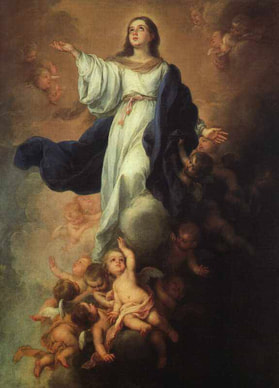 The Virgin’s Assumption, however, is also a gift to the faithful.The Holy Father writes, “while the illusory teachings of materialism and the corruption of morals…threaten to extinguish the light of virtue and to ruin the lives of men by exciting discord among them, in this magnificent way all may see clearly to what a lofty goal our bodies and souls are destined.” Mary was the first disciple of Jesus; she was the perfect disciple of Jesus. At the Wedding at Cana, she tells the servers, “Do whatever He tells you.” This is the same kind of trust all the faithful should try and emulate. And, after living a model life, she was gifted with her body and soul being brought up to Heaven. That is exactly the same hope that all Catholics (should) share. The Nicene Creed sums it up quite well: “He will come again in glory to judge the living and the dead and his kingdom will have no end…I look forward to the resurrection of the dead and the life of the world to come.” Catholics believe that at the end of time itself, when Christ comes to “render to each man according to his works, and according to his acceptance or refusal of grace,” all the dead will be resurrected (cf. CCC, 682). Those who enter Heaven will be restored, body and soul, to the gloried beings they were always meant to be before the Fall. Thus, the Assumption of Mary is not just a one-time occurrence, but rather a foretaste of what will happen at the end of days. It was not only a gift to the Blessed Mother, but also a gift to mankind. Humanity received a glimpse into what lies ahead for those who follow the example of a woman who put her whole heart, her whole faith, and her whole being into the care of a man she knew as her son and the Son of God. **This post was originally published on 8/14/2014** AuthorVictor David is a Collaborator with the Catholic Apostolate Center and is a staff member at The Catholic University of America, his alma mater, in Washington, D.C. He is a member of the Catholic University Knights of Columbus.
Over the course of this past year, we have had many opportunities to lose hope. Friends and family became ill, we could not enjoy a common handshake or hug, loved ones died, churches, schools, and recreational activities were shuttered, and we were required to keep distant from each other. In such circumstances, it is easy to feel low, to feel alone, and to feel as though better times are not on the way. Yet, the saints we honor on this day teach us the exact opposite – in the darkest of times, that is when hope is most needed. By clinging to hope, one can get through any hardship. St. Thomas More (1478-1535) is probably one of the most well-known English Catholic saints. The quote, “I die the King’s good servant, and God’s first,” is attributed to him and typically serves as the basis for many a reflection on faithful citizenship. He was also a prominent humanist and counted the great Erasmus as a friend. More famously refused to acknowledge Henry VIII as head of the Church of England, leading to More’s imprisonment and eventual execution. While awaiting his trial, More composed his final work, A Dialogue of Comfort against Tribulation. He begins by stating that while some things can ease tribulation, like medicine, the most effective comfort is faith given by God. Because of faith, one can persevere through any trial encountered. He notes that one’s time on earth is fleeting compared to eternal life afterwards. Thus, one should live life striving to attain the rewards of heaven rather than those on earth. St. John Fisher (1469-1535) is perhaps less well-known to contemporary Catholics. However, in his own time, many considered him not only the greatest preacher but also the greatest theologian in all Europe. He served as the bishop of the Diocese of Rochester and chancellor of the University of Cambridge. Fisher defended Queen Catherine of Aragon when Henry VIII attempted to divorce her. He also refused to acknowledge Henry as head of the Church and paid the price of imprisonment and execution. Just before Fisher’s trial, Pope Paul III named him a cardinal. Asked to preach at the funeral of King Henry VIII’s father, Henry VII, Fisher began by declaring, “Let no man think that my intention is to praise him for any vain transitory things of this life.” The bishop went on to say that great wealth and power do not ensure eternal life. Rather, Fisher said, “The cause of this hope was the true belief he had in God, in his Church, and in the Sacraments thereof.” By holding strong to his faith in the merciful God, Fisher stated that Henry VII left this world in peace hoping to see his heavenly reward. It is easy to admire the great convictions of the great people of the past. It is much harder to match that same zeal. Pope Francis reminds us that prayer is “a sacred fire in us too, which burns continually and which nothing can extinguish.” Therefore, by working little by little, day by day, we can grow in faith and, thus, grow closer to God. And as we come closer and closer to Him, then no matter what may be going on around us, no matter the discouragement that may afflict others, no matter the tribulation, we can remain anchored in the hope that comes from God alone. To learn more about the saints, please visit our Catholic Feast Days page. For more resources on COVID-19, please click here. November 9th is a worldwide feast day celebrating the Dedication of the Lateran Basilica. It may seem silly to have a feast day devoted to a church; after all, we are used to commemorating great saints, like Cecilia (November 22nd) or Andrew the Apostle (November 30th), or an aspect of Christ’s life, like the Solemnity of Christ the King (this year, November 25th). So why celebrate a building? Sure, it is a church, Mass is held there, the Eucharist is housed there – but that can be said of any other Catholic church. What makes the Lateran Basilica so special?
The full name of this particular church is the Archbasilica of the Most Holy Savior and Saints John the Baptist and John the Evangelist at the Lateran. What a mouthful! The Lateran Basilica is one of the “major or papal basilicas,” the four highest-ranking churches in Roman Catholicism, due to their historical significance. The other three are St. Peter’s in the Vatican, St. Paul Outside the Walls, and St. Mary Major. St. John Lateran (as it is commonly known) is the oldest of the four, the oldest public church in Rome, and houses the cathedra (seat) of the pope in his capacity as the Bishop of Rome. Because it houses the cathedra, the basilica is the cathedral of the Diocese of Rome. It is also the sole holder of the title “archbasilica,” demonstrating its ranking above every other church in the world. An inscription on the façade of the building says, “Sacrosancta Lateranensis ecclesia omnium urbis et orbis ecclesiarum mater et caput.” Translated, it means, “The Most Holy Lateran Church, mother and head of all the churches in the city and the world.” Today’s feast day celebrates not only the physical structure itself, but also what it symbolizes. As the seat of the Holy Father, it reminds our hearts and minds of the fidelity we show to the successor of St. Peter, an expression of unity that binds together all the faithful. Moreover, the physical edifice of the church calls to mind what the Catechism states, “The Church is the Body of Christ” (CCC 805). While the Lateran Basilica itself is a magnificent building, housing priceless works of art, in the end it is just a hollow shell. The faithful who enter it, pray in it, and celebrate the Eucharist inside it are what truly bring it to life and bring its purpose to fulfillment. On this feast day, let us pray. Let us pray for the Holy Father, that he may continue to lead the faithful entrusted to his care. And let us pray for the Church, that her members may always work in unity to bring about Christ’s kingdom on earth. Victor David is a collaborator with the Catholic Apostolate Center and a staff member at The Catholic University of America in Washington, DC. On Trinity Sunday, one cannot help but think of a common greeting heard at Mass, “Let us begin as we wish to begin all things. In the name of the Father, and of the Son, and of the Holy Spirit. Amen.” How many times have we made the Sign of the Cross? Why do we begin Mass (indeed, every prayer) with the Trinity? Perhaps Trinity Sunday is the perfect day to ask, what does it all mean?
During a General Audience, Pope Francis remarked, “The Mass begins with the Sign of the Cross. The whole prayer moves, so to speak, within the space of the Most Holy Trinity…” Perhaps we should look at the actions of the Trinity to see what God has done for us and thus see the true power of those words. A favorite hymn sung on Trinity Sunday begins, “O God Almighty Father, Creator of all things, The Heavens stand in wonder, While earth Thy glory sings.” Everything, from the smallest pebble to the tallest mountain and every living creature in between, is the result of God’s generative power. As the Catechism points out, “the totality of what exists depends on the One who gives it being” (CCC 290). And so, when we begin “In the name of the Father,” we remind ourselves of the awesome power God has to create everything from nothing. The second verse of the hymn goes, “O Jesus, Word Incarnate, Redeemer most adored, All Glory, praise and honor, Be Thine, our Sovereign Lord.” St. Paul reminds us, “In him we have redemption by his blood, the forgiveness of transgressions, in accord with the riches of his grace” (Eph 1:7). By his death and resurrection, Christ opened the doors of heaven for the faithful. The third verse says, “O God, the Holy Spirit, Who lives within our souls, Send forth thy light and lead us to our eternal goal.” The Catechism states, “By virtue of our Baptism, the first sacrament of the faith, the Holy Spirit in the Church communicates to us, intimately and personally…” (CCC 683). It is by the Holy Spirit that the knowledge of our faith is revealed to us. And it is through the inspiration of the Holy Spirit that we are able to live out our faith in the hope of reaching heaven. One thing that should be noted when talking about the Persons of the Trinity, is that while the Father, Son, and Holy Spirit may be three distinct Persons, they are still of one nature. This is what we mean in the Nicene Creed when we say that Christ is “consubstantial with the Father”—they are distinct but are of the same substance. The Father, Son, and Holy Spirit are each wholly and entirely God. Many times, when we talk about the Trinity, we appropriate certain actions to each Person, i.e. God the Creator and Christ the Redeemer. This is fine, so long as we remember that the Father alone did not create, nor did the Son himself redeem. All actions are done in concert as one Triune God. On this Trinity Sunday, when we make the Sign of the Cross, let us do so remembering what that action reveals – that God created all things, that through Him the gates of heaven are opened to us, and that with Him our faith is revealed. And let us always sing the chorus of that hymn we used above: “O most Holy Trinity, Undivided Unity; Holy God, Mighty God, God Immortal, be adored.” Questions for Reflection: Is there a Person of the Trinity that you go to most frequently in prayer? How can you continue to build your relationship with each Person of the Trinity? Victor David is a collaborator with the Catholic Apostolate Center and a staff member at The Catholic University of America in Washington, DC. In Pope Francis’ recent exhortation, Amoris Laetitia, he concludes with a prayer to the Holy Family. The first part of the prayer reads, “Jesus, Mary and Joseph, in you we contemplate the splendor of true love; to you we turn with trust.” In just those few words, we are reminded of the importance of the Holy Family; they are the perfect reflection of true love. They exemplify to us what it means to love God and one another.
Of course, it might be wise to first ask ourselves, “What is true love?” The dictionary defines it as a “strong affection for another” (Merriam-Webster). The author Victor Hugo once equated love to joy when he said, “The greatest happiness of life is the conviction that we are loved” (Les Miserables). For our purposes, let us take the definition straight out of the Gospels, that “no one has greater love than this, to lay down one’s life for one’s friends” (John 15:18). True love, then, is self-sacrificial. Having true love does not mean that we live to seek the best for ourselves. Rather, it means that we actively seek the best for others. Using this understanding of true love, it becomes clearer how each member of the Holy Family exemplifies those qualities. St. Joseph is commonly known as the silent man of the Gospels in that he is never quoted. Yet, we see episodes that testify to his goodness. Matthew’s Gospel tells us that when Mary became pregnant, Joseph wanted to divorce her quietly to spare her from any shame. Nevertheless, he ended up taking Mary into his home at the urging of the angel (Matthew 1:18-24). During this period of time, Mary as a pregnant and unwed mother was extremely scandalous. Joseph would have had every right to publicly humiliate her and cast her aside; in fact, accepting her in her state would have brought notoriety to himself. Yet, he took her into his home. He was willing to sacrifice his own reputation to show his devotion to Mary and to her son, an act of true love. Mary, similarly, shows sacrificial love at the message of an angel. Luke’s Gospel tells us that the angel of the Lord appeared to her and announced that she would bear the “Son of the Most High” (Luke 1: 32). Mary was a teenager, just betrothed to Joseph. Before the arrival of the angel, she was assured a quiet life, a peaceful life. Accepting this message would change everything; Mary’s life ahead would be a vast unknown. Nevertheless, she simply replied, “I am the handmaid of the Lord. May it be done to me according to your word” (Luke 1: 38). Mary showed true love by sacrificing herself in order for the Son of God to enter the world. And, of course, it does not take much effort to think of a moment when Jesus displayed true love. In dying on the cross, he destroyed death itself; as the tomb was closed, he opened the gates of Heaven. His willful sacrifice is the ultimate example of “laying down one’s life.” Thus, each member of the Holy Family demonstrates to us, what it means to truly love. In Deus Caritas Est, Pope Benedict reminds us that “Love is the light – and in the end, the only light – that can always illuminate a world grown dim” (Deus Caritas Est, 39). As we move forward into the New Year, let us use the example of the Holy Family as our inspiration and bring a bit of light to our world. By being willing to sacrifice some of ourselves each day for the sake of others, we too can become models of true love. Victor David is a collaborator with the Catholic Apostolate Center and a staff member at The Catholic University of America in Washington, DC. "During those days Mary set out and traveled to the hill country in haste to a town of Judah, where she entered the house of Zechariah and greeted Elizabeth. When Elizabeth heard Mary’s greeting, the infant leaped in her womb, and Elizabeth, filled with the holy Spirit, cried out in a loud voice and said, ‘Most blessed are you among women, and blessed is the fruit of your womb. And how does this happen to me, that the mother of my Lord should come to me? For at the moment the sound of your greeting reached my ears, the infant in my womb leaped for joy. Blessed are you who believed that what was spoken to you by the Lord would be fulfilled.’" -Luke 1:39-45
Year after year, we hear this reading in the days leading up to Christmas. As we prepare for the day on which we celebrate the Son of God entering the world, we tend to hear this passage and focus on Elizabeth’s words: “How does this happen to me, that the mother of my Lord should come to me?” and “blessed are you who believed.” Rightfully so, we concentrate on Mary’s fiat and, thus, the beginnings of the life of the one who would save us all. However, we may tend to overlook another thing Elizabeth exclaimed: “the moment the sound of your greeting reached my ears, the infant in my womb leaped for joy.” John the Baptist would go on to be the great “forerunner of Christ.” As we commemorate the Feast of the Nativity of John the Baptist, we remember that it was he who prepared the way for Jesus’ ministry. John preached the coming of the Kingdom of God to the thousands that flocked to the desert to hear his preaching. It was he who baptized Christ in the Jordan, thus anointing him for his ministry. John the Baptist’s own ministry goes back to the moment when John, in his mother’s womb, hears the voice of Mary calling. That voice is not just that of a young woman, but a young woman who is the Mother of God. Thus, John, leaping in Elizabeth’s womb, seems to be recognizing and acknowledging the fact that the Lord Himself is present in Mary’s womb. Several years ago, then-Pope Benedict XVI made a comparison to John’s leap for joy: “Mary, expecting the birth of her Son Jesus, is the Holy Ark that contains the presence of God, a presence that is a source of consolation, of total joy. John, in fact, leaps in Elizabeth’s womb, just as David danced before the Ark.” Benedict reminds us of the scene in 2 Samuel 6 when David dances excitedly as the Ark of the Covenant is brought into Jerusalem. In both cases, the Word of God is physically present. Before John, the Word is Jesus in the womb of Mary. Before David, the Word is in the form of the Ten Commandments within the Ark. For them, being in the presence of the Lord was not something they took lightly. They were not afraid or saddened, they were filled with a joy so immense and so uplifting that the only way they could express themselves was by jumping and dancing. These Biblical events point to the line at the heart of Pope Francis’ exhortation: “The joy of the gospel fills the hearts and lives of all who encounter Jesus.” Faith in Jesus, who is the Word of God incarnate, is not something that should bring us down. It is not something that should feel like an overwhelming burden. When we go to a sports game or another competition, for example, we sit on the edge of our seats, waiting and hoping that our side will come out on top. When our team scores, we jump to our feet and cheer loudly. We clap and sing and even shed some tears. How much more, then, are we call to be excited when we are in the presence of God in the Eucharist or spreading the Good News to those we encounter? We are invited to witness to our faith gladly, for we believe in a God who loved us so much that He gave His only son to die for our sins so that we might be able to have eternal life with Him (cf Jn 3:16). That kind of love reminds us to live our life of faith happily. Pope Francis once commented, “I cannot imagine a Christian who does not know how to smile.” He was correct. How could a true believer exemplify the love of God with a frown? Let us follow the examples of David and John the Baptist who show us that true faith does not bring about sadness or dread, but instead brings us joy and peace. When we encounter someone who may challenge our beliefs, do not yell and scream back, but face that opposition with grace and a smile. When we go to Mass and notice that those around us may be mumbling their way through the hymns, I invite you to sing loudly and proudly, remembering that you are glorifying God. And when we get tired in our faith lives, let us be reminded of Christ’s love and sacrifice for us and, like John the Baptist, “leap for joy” ourselves. Victor David is a collaborator with the Catholic Apostolate Center and a staff member at The Catholic University of America in Washington, DC. “Behold the wood of the cross on which hung the salvation of the world.” This line is chanted three times by the celebrant of the Good Friday service; after each time, a covered cross or crucifix is partially unveiled until after the third time when the full cross or crucifix is exposed. The faithful then are invited to reverence the cross, usually with a kiss.
For many, the most memorable part of the Good Friday liturgy is the reading of the Passion Narrative. We are once more transported back 2,000 years to relive the moment when “[God] gave his only Son, so that everyone who believes in him might not perish but might have eternal life” (John 3:16). The moment that has always stood out to me is the Veneration of the Cross. To me, the simple act of embracing the Cross of Christ is one of the most beautiful things one can experience. The Veneration of the Cross has been celebrated in Rome since the seventh century and in Jerusalem since the fifth. It has since become a universal practice in the Church. Many can recall the image of a priest, bishop, and even the pope humbling himself before what was once the symbol of oppression, seeing it instead as a symbol of hope and life. When we embrace the cross and reverence it with a kiss, we in effect adore Christ himself, for the cross is the representation of Christ and his sacrifice. In that act, we then embrace the cross as our own and give ourselves fully to our Lord and Savior. Pope Benedict once remarked, “Entrusting ourselves to Christ, we lose nothing, we gain everything. In his hands our life acquires its true meaning.” Thus, when we embrace the cross, we accept that, through Christ’s sacrifice, we are saved and able to enter into eternal life. We also transform the cross from that instrument of death into the method by which we can now enter God’s heavenly kingdom. As the phrase used in the Stations of the Cross states, “We adore you, O Christ, and we praise you…because by your cross you redeemed the world.” In venerating the Cross of Christ, we make those words active in our own lives. We leave the church on Good Friday knowing that we have reaffirmed our faith in the Lord’s redeeming power. We join ourselves with those who were present at that first Good Friday and believed that the story of salvation did not end that day. In fact, it was only the beginning. And so, when the celebrant chants, “Behold the wood of the cross on which hung the salvation of the world,” let us, with all our heart respond, “Come, let us adore.” For more Lenten Resources, please click here. Victor David is a collaborator with the Catholic Apostolate Center and a staff member at The Catholic University of America in Washington, DC. “We declare, pronounce, and define that the doctrine which holds that the most Blessed Virgin Mary, in the first instance of her conception, by a singular grace and privilege granted by Almighty God, in view of the merits of Jesus Christ, the Savior of the human race, was preserved free from all stain of original sin, is a doctrine revealed by God and therefore to be believed firmly and constantly by all the faithful” (Pius IX. Ineffabilis Deus).
With these words, Pope Pius IX declared ex cathedra the doctrine of the Immaculate Conception; only twice in recent history has this occurred (the other being Pius XII’s declaration on the Assumption). For centuries, the faithful have commemorated the belief that Mary, from the moment of her conception, by a loving act of God, was free from sin. This, of course, does not mean that Mary was exempt in some way from Jesus’ redemption of humanity. Rather, as Blessed John Duns Scotus put it, she acquired the greatest of redemptions through her special role in Salvation History (Lectura III Sent., 119). Many who do not agree with the doctrine argue that if Mary was not born with Original Sin or did not sin at any point in her entire life (as Church teaching proclaims), then she could not have been fully human. Therefore, if the Blessed Mother had never been born into sin and never sinned in her life, how could she have been truly human? Some reason, how could she have experienced what humanity really goes through if she didn’t live with sin? Basically, how could she have been truly free to be a person, struggling with the temptations, the ups and the downs, the “messiness” that is life? The concept of a sinless life, to many, seems boring and totally reliant on some higher being. How can one be totally dependent on God’s love? In one of his earliest homilies as Pope, Benedict XVI answered these questions quite definitively. He stated, “The human being lives in the suspicion that God's love creates a dependence and that he must rid himself of this dependency if he is to be fully himself.” Indeed, many of us feel reluctant to fully give in to the love and mercy of God for fear that we would be giving up our ability to choose to be whomever we want to be. In that case, we rely not on God’s love, but on our own powers and abilities. This may sound preferable to some, but the Pope-Emeritus reminds us, “Love is not dependence but a gift that makes us live. The freedom of a human being is the freedom of a limited being, and therefore is itself limited.” Our knowledge and abilities as humans are but a speck in comparison to God’s love. Therefore, in choosing not to live in accordance with what is right and true, we actually limit ourselves from fully living. Mary, the Immaculate Conception, is the prime example of total abandonment to God’s love – she is truly free. Though she was sinless throughout her life, Mary still faced the temptation to sin. However, because she lived in complete openness to the Lord’s will, Mary did not choose sin, but rather, chose God. In his homily, Benedict notes, “The closer a person is to God, the closer he is to people…The fact that she is totally with God is the reason why she is so close to human beings.” Sinless, she was the pure vessel, the new Ark of the Covenant, through which “the Word was made flesh and dwelt among us” (John 1:14) She is the mother of God, and thus, the mother of Love itself, for God is Love. (cf 1 Jn 4:8) Living in that love, she calls out to us: “Have the courage to dare with God! Try it! Do not be afraid of him! Have the courage to risk with faith! Have the courage to risk with goodness!...so that your life will become broad and light, not boring but filled with infinite surprises, for God's infinite goodness is never depleted!” Today, on the Solemnity of the Immaculate Conception, Pope Francis has proclaimed the opening of the Extraordinary Jubilee of Mercy. Please visit our Year of Mercy resources by clicking here. Victor David is a collaborator with the Catholic Apostolate Center and a staff member at The Catholic University of America in Washington, DC. I have always had a special admiration for St. Jude. Growing up, my home parish was the Church of St. Jude. I can still remember my mom telling me to pray to the saint whenever I felt that I was facing an impossible task. Legend says that since his name was so close to that of Judas, many people did not pray to him, for fear of confusing the two. To show his thanks to people who did remember him, St. Jude was willing to be extra fervent in bringing the faithful’s requests to the Lord. In John’s Gospel, towards the end of the Last Supper, Christ observes that soon he will no longer be with his disciples, but that he will soon reveal himself. Jude asks Jesus, “Master, [then] what happened that you will reveal yourself to us and not to the world?” (John 14:22) Our Lord responded, “Whoever loves me will keep my word, and my Father will love him, and we will come to him and make our dwelling with him” (John 14:23). He is telling his disciple, and us, that whoever holds God’s teachings in his or her heart and acts accordingly is filled with the Spirit of the Lord. The Feast of Sts. Simon and Jude remind us all to be God’s dwelling place. While we do not know much about the lives of either saint, tradition tells us that Simon was called the Zealot in the gospels and Acts (Lk 6:15; Acts 1:13). There is some debate to whether this means he was an ardent disciple of Jesus or that he was a former member of the Zealot sect that advocated for the violent overthrow of the Roman occupation. If the latter is to be believed, then Simon truly demonstrates that no one is beyond becoming a dwelling place of the Lord. The Zealots were known to use violence to advocate noncompliance with the Roman authorities. Nevertheless, tradition and legend hold that Simon helped to spread the Good News, peacefully, through much of the Middle East. It was that conversion of heart that truly made Simon a dwelling place of the Lord. Legend tells us that both saints suffered martyrdom while spreading the faith in Syria. Tradition holds that Simon was either crucified or sawed in half while Jude was clubbed to death or beheaded by an axe. Yet, in the face of adversity and hostility, they continued to profess the faith that had been revealed to them until the very end. So, the question remains: How do we become God’s dwelling place? The answer is simple – follow what Jesus told St. Jude at the Last Supper: love the Lord and keep His Word. When we accept and follow the Word of God, He truly and fully enters into our lives. By keeping His word on our minds and in our hearts, we make ourselves His dwelling place. Sts. Simon and Jude truly became dwelling places of God. What happens when God resides with someone? He or she becomes so full of God’s love that it must be spread. That is what happened to Sts. Simon and Jude and that is what is possible for all of us. By following their example, we, too, can be an outpouring of God’s love to others and help build up His kingdom. Victor David is a collaborator with the Catholic Apostolate Center and a staff member at The Catholic University of America in Washington, DC. -- The St. Jude Shrine is located in the heart of Baltimore, Maryland, and has been operated and staffed by the Pallottine Fathers and Brothers for over 80 years. The Archbishop of Baltimore entrusted the Shrine to the Pallottines in 1917. Regular Novena Services were established around the outset of World War II, when devotion to St. Jude reached remarkable proportions. Today, St. Jude Shrine is the Nationwide Center of St. Jude Devotions. Like the St. Jude Shrine on Facebook.
The St. Jude Shrine is a ministry of the Society of the Catholic Apostolate - Immaculate Conception Province. Learn more by visiting http://www.sacapostles.org/our-ministries.html. 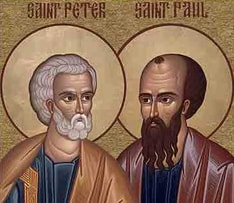 Yesterday, we celebrated the Solemnity of Sts. Peter and Paul, which gives the faithful the opportunity to reflect on many different subjects. For instance, it is on this feast that the Pope traditionally presents the pallium to newly installed metropolitan archbishops, signifying their union with the Holy See. The feast is also important for the ecumenical movement because it is on this day that leaders of both the Catholic and Orthodox churches come together to pray and work towards full communion. However, one theme that seems to be missed is that of God’s mercy as exemplified by the lives of these two leaders of the early Church. And with the Jubilee Year of Mercy upcoming, one might want to look to these great saints for some inspiration. One of the most well-known moments of the Passion is when Peter denies Christ three times (Mt 26:69-75) even after promising Jesus that, “though all should have their faith shaken, mine will not be” (Mk 14:29). Likewise, Paul also denied Jesus by his persecution of the disciples. He even takes part in the death of the first martyr, St. Stephen (Acts 7:58-60). If their stories had stopped there, we might judge the first as a fare-weather follower and the second as a ruthless fanatic. Yet, we know that is not how the story ends. In the Gospel of John, Jesus appears to his disciples as they are fishing. They are eating breakfast on the shore when Christ asks Peter three times, “Do you love me?” to which Peter replies yes twice and at the third time says, “Lord, you know everything, you know that I love you” (Jn 21:15-17). And thus, Peter is redeemed and given the charged by Jesus to “Feed my sheep.” He becomes the leader of the early church and by tradition is regarded as the first pope. On his way to Damascus, Paul sees a bright light from the sky and voice crying out, “Saul, Saul, why are you persecuting me?” (Acts 9:4). The voice is revealed to be that of Jesus himself. Blinded by the light, Paul enters Damascus when one of Jesus’ disciples, Ananias, lays his hands on him at the Lord’s command. Upon doing so, Paul’s vision is regained, is baptized, and goes on to preach the Gospel throughout the Mediterranean. Pope Benedict XVI reminds us that, “The Church is not holy by herself; in fact, she is made up of sinners…Rather, she is made holy ever anew by the Holy One of God, by the purifying love of Christ.” Similarly, Pope Francis recalls, “[God] never tires of forgiving, but at times we get tired of asking for forgiveness…He is the loving Father who always pardons, who has that heart of mercy for us all.” The lives of Sts. Peter and Paul show us that no one is beyond forgiveness, so long as he or she seeks the mercy of God. Therefore, these two great pillars of the Church are a great reminder to have as we approach the Jubilee Year. Victor David is a staff member at The Catholic University of America in Washington, D.C.
Some time ago, I wrote about the Hallelujah Chorus from Handel’s Messiah. I mentioned how often times we hear that piece performed around Christmastime, although that portion of the Messiah is actually about Easter and the Resurrection. Now that the Nativity has arrived, perhaps it might be interesting to look at what Handel did use to interpret the Birth of Christ.
“For Unto Us a Child is Born” is taken from the words of the prophet Isaiah (Is 9:6): For unto us a Child is born Unto us a Son is given And the government Shall be upon His shoulder And his name shall be called Wonderful Counselor The Mighty God The Everlasting Father The Prince of Peace In that one verse, the prophet presents so much insight into the aforementioned Child to be born. He will be a son, he shall reign over a great dominion, and he shall bring peace. Well, only one child fits that description: Jesus Christ. When Isaiah tells of a son being given to the faithful, he is not just talking about the neighbor’s kid. He foretells of a son presented as a gift to all who believe. And indeed, in Christ, we have not only a child but also the moment when the word became flesh and dwelt among us (Jn 1:14). And through that word, humanity is redeemed. Through Christ, death no longer has power. The gates of heaven are opened to all that would follow he who is called the Son of God. “The kingdom of heaven is at hand,” declared John the Baptist (Mt 3:2). Yes, we believe that at the end of time Christ will establish his kingdom for all eternity (CCC 1042). But in the meantime, his kingdom exists on earth in the form of the one, holy, catholic, and apostolic Church (CCC 763). Founded by Jesus with a mission to manifest the will of God, the Church waits in hopeful anticipation for the establishment of Christ’s eternal reign. It is very appropriate, then, for Isaiah to foretell a Prince of Peace. Not only would Jesus go on to proclaim a kingdom of love but also, when he returns, establish a heavenly domain that knows no end. At Christmas, we celebrate both a beginning and an end. We celebrate the very beginning of Christ ruling the hearts and minds of the faithful while also looking toward the end when he will come again and his “kingdom will have no end.” Victor David is a collaborator with the Catholic Apostolate Center and a staff member at The Catholic University of America in Washington, DC. If the title of this post sounds a bit familiar, then you probably recall this quote was some of the first words uttered by Pope Emeritus Benedict XVI when he appeared at the central balcony over St. Peter’s Square upon his election in 2005. Not too long ago, we saw that humility in even greater depth when Benedict resigned from his role as Bishop of Rome, recognizing that his “strength… has deteriorated in me to the extent that I have had to recognize my incapacity to adequately fulfill the ministry entrusted to me.” Knowing that he could no longer serve as the Vicar of Christ in the manner which he desired, and trusting in God’s will, he freely renounced his office in order for another to steer the Catholic Church.
While this act of Pope Benedict truly stands out as an act of a holy man, this is far from the only example of faith from a Roman Pontiff. As the Church celebrates the Solemnity of All Saints, it provides a moment to reflect on a few other Popes, especially in the twilight of a year which saw two Popes canonized and another beatified by Pope Francis. When Cardinal Giuseppe Roncalli entered the conclave of 1958, it is famously asserted that he had already booked his train ticket back to Venice – for he never expected to be elected by the College of Cardinals. Yet, when elected he chose the name John, partly because of John the Evangelist, the beloved of the Lord. Just the great apostle had done, St. John XXIII, too, laid himself at the service of Christ. When he first began talking about convening the Second Vatican Council, many of his contemporaries doubted it would ever occur. Nevertheless, knowing he was trying to fulfill God’s will, the pope persisted and opened the council on October 11, 1962. This was just one instance out of so many that showed what kind of person “Good Pope John” strove to be. He acted not for ovations for himself, but rather for the glory of God. In December 1963, President Lyndon Johnson awarded the Presidential Medal of Freedom posthumously to John XXIII. The President remarked, “He was a man of simple origins, of simple faith, of simple charity. In his exalted office he was still the gentle pastor…His goodness reached across temporal boundaries to warm the hearts of men of all nations and of all faiths.” One of John XXIII’s closest friends was Cardinal Giovanni Montini. Upon his election a Pope Paul VI, he continued the work of his predecessor in overseeing Vatican II. If humility and surrendering to God’s plan are signs of sanctity, then two moments stand out in the pontificate of the man now called “Blessed.” In 1963, at a Mass in St. Peter’s Basilica, Blessed Paul VI removed his tiara and placed it on the alter – a symbolic act showing that the pope not only gave up claims to temporal power on earth, but also yielded fully to the will of the Lord in heaven. Another touching example is his steadfastness after issuing his most famous encyclical, Humanae Vitae. In it, the pope reiterates the Church’s teaching on marriage and denunciation of artificial birth control. Though his words were well received in some parts of the world, the reaction was quite negative. Yet, Blessed Paul VI knew that he was reaffirming ultimate truths and that no matter the criticism, his faith would see him through. Modern history’s second longest papacy came soon after Paul VI. St. John Paul II, JPII, John Paul the Great – no matter what the title, the sentiment is the same. The faithful witnessed a saint walking among them. His magnificent sanctity was seen exquisitely in December of 1983. Two days after Christmas, the pope travelled to Rebibbia prison to meeting with Mehmet Ali Agca, the man who tried to assassinate the pontiff just two years before. During the meeting, John Paul again forgave his would-be-assassin. Years later, the Italian government pardoned Agca at the pope’s urging. This episode, too, was an example of the great faith of the Bishop of Rome. Not only did he imitate Christ’s actions two-thousand years ago, but he also gave a great model for the present day faithful. If a man could humble himself to forgive another man for trying to kill him, all the more people should forgive each other for the smaller transgressions in life. Many people consider themselves lucky to attend a papal event, watch the pope pass by them in an open vehicle, or even to just hear the pope at a Sunday Angelus. Indeed, so many others never get the opportunity to come in close contact with the Vicar of Christ. Nevertheless, a priest once said that these holy men are now even closer to the faithful than ever before because they number among the saints in heaven. The Catechism reminds us, “the union of the wayfarers with the brethren who sleep in the peace of Christ is in no way interrupted, but on the contrary, according to the constant faith of the Church…those who dwell in heaven fix the whole Church more firmly in holiness…They do not cease to intercede with the Father for us” (CCC 955-6). By asking for their intercession and following their example, the faithful are led home to the Father in heaven and can number among the Communion of Saints. For more information, check out the Catholic Apostolate Center's Paul VI and our Sts. John Paul II and John XXIII Resource Pages! Victor David is a staff member at The Catholic University of America in Washington D.C. 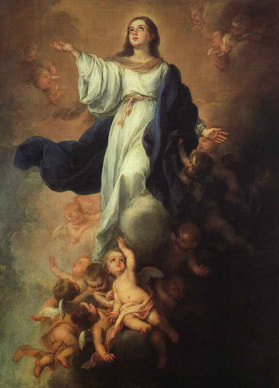 On November 1, 1950, Pope Pius XII issued the Apostolic Constitution Munificentissimus Deus (The Most Bountiful God) which declared “the Immaculate Mother of God, the ever Virgin Mary, having completed the course of her earthly life, was assumed body and soul into heavenly glory.” In doing so, Pope Pius defined for all time that the Assumption is a belief of the Catholic faith (cf. CCC, 966). And though the decree itself is only sixty-four years old, it succinctly shows that the belief spans all the way back to the beginnings of the Christian tradition. But what are the implication of this teaching and its feast day for the everyday faithful? First of all, it further illustrates Mary’s importance not only for Catholics but also for all mankind. This feast is but another way in which the Church honors the vessel that brought the Messiah into the world. It is through Mary that the human race received its savior. Therefore, one can see her Assumption into Heaven as a beautiful gift given to her by God. After living a truly exemplary life of faithfulness and love, God saw fit to bring her body and soul into paradise where, as PopePius puts it, “as Queen, she sits in splendor at the right hand of her Son, the immortal King of the Ages.” The Virgin’s Assumption, however, is also a gift to the faithful.The Holy Father writes, “while the illusory teachings of materialism and the corruption of morals…threaten to extinguish the light of virtue and to ruin the lives of men by exciting discord among them, in this magnificent way all may see clearly to what a lofty goal our bodies and souls are destined.” Mary was the first disciple of Jesus; she was the perfect disciple of Jesus. At the Wedding at Cana, she tells the servers, “Do whatever He tells you.” This is the same kind of trust all the faithful should try and emulate. And, after living a model life, she was gifted with her body and soul being brought up to Heaven. That is exactly the same hope that all Catholics (should) share. The Nicene Creed sums it up quite well: “He will come again in glory to judge the living and the dead and his kingdom will have no end…I look forward to the resurrection of the dead and the life of the world to come.” Catholics believe that at the end of time itself, when Christ comes to “render to each man according to his works, and according to his acceptance or refusal of grace,” all the dead will be resurrected (cf. CCC, 682). Those who enter Heaven will be restored, body and soul, to the gloried beings they were always meant to be before the Fall. Thus, the Assumption of Mary is not just a one-time occurrence, but rather a foretaste of what will happen at the end of days. It was not only a gift to the Blessed Mother, but also a gift to mankind. Humanity received a glimpse into what lies ahead for those who follow the example of a woman who put her whole heart, her whole faith, and her whole being into the care of a man she knew as her son and the Son of God. Victor David is a Collaborator with the Catholic Apostolate Center and is a staff member at The Catholic University of America, his alma mater, in Washington, D.C. He is a member of the Catholic University Knights of Columbus. |
Details
Archives
July 2024
Categories
All
|
About |
Media |
© COPYRIGHT 2024 | ALL RIGHTS RESERVED

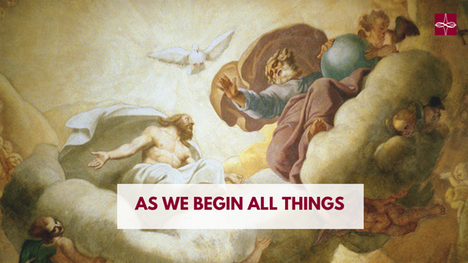
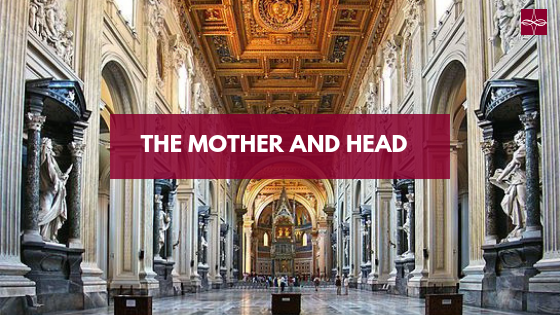
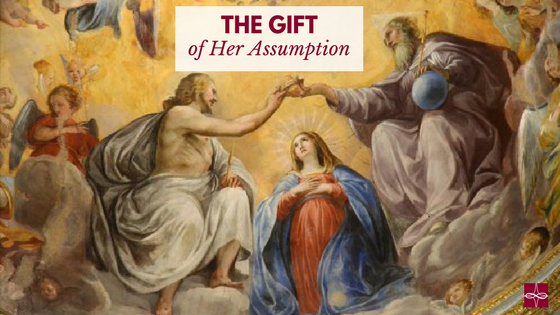
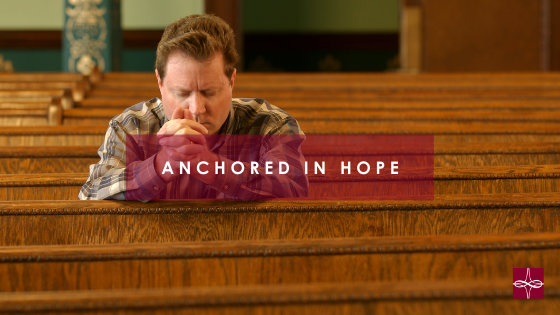

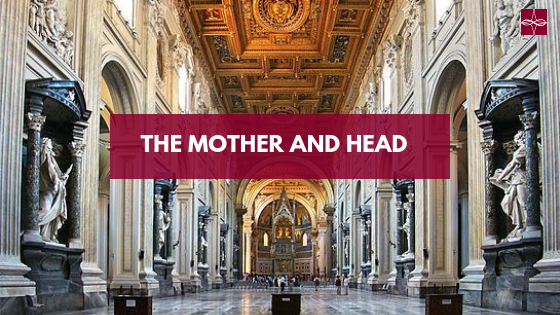
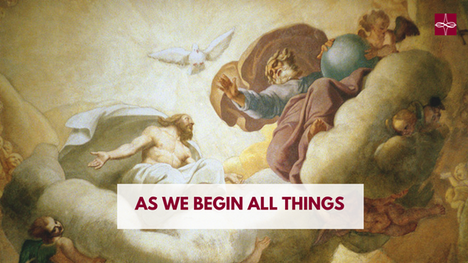
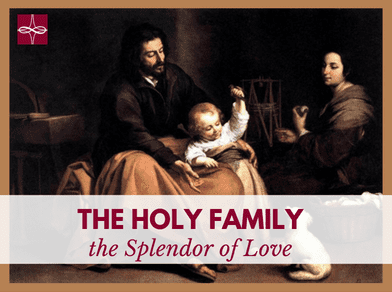
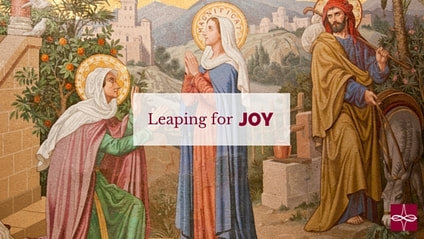
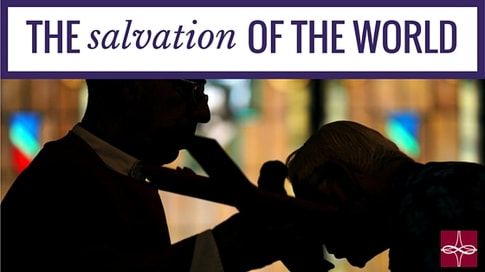
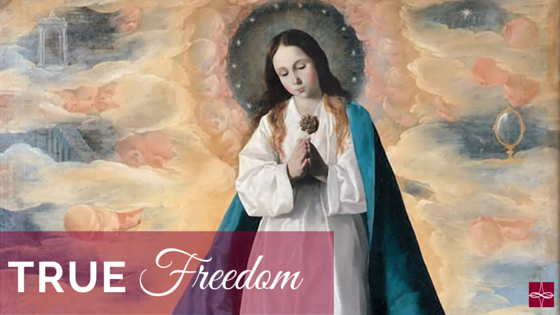
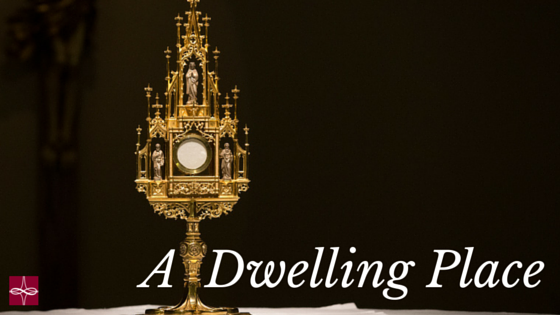
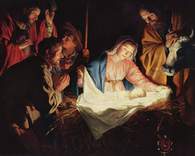
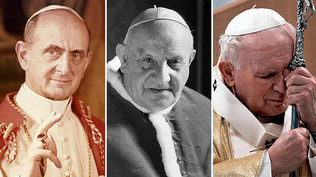
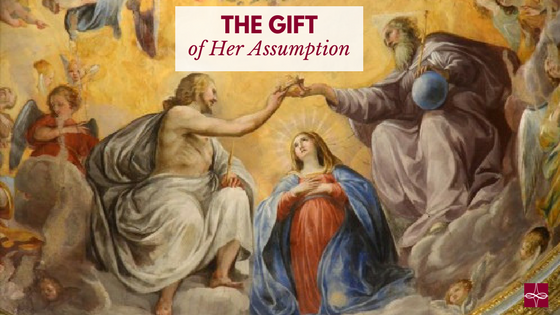
 RSS Feed
RSS Feed